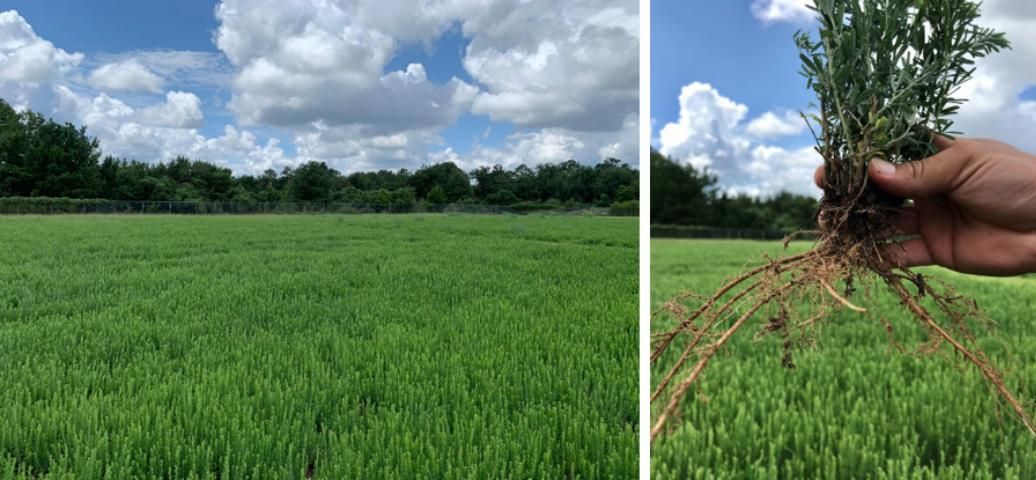Grasses (Gramineae) Community
Adaptation mechanisms of grass and forage plants to stressful environments
- This topic is empty.
- AuthorPosts
- February 16, 2025 at 12:04 am #566294
 Agric4ProfitsKeymaster
Agric4ProfitsKeymaster
Grass and forage plants are essential to agricultural systems, especially for livestock production, and they face various environmental stressors throughout their life cycles.
Stressful environments, such as drought, extreme temperatures, nutrient deficiency, and poor soil conditions, can negatively impact their growth and productivity. However, grass and forage plants have evolved numerous mechanisms to adapt to these challenging conditions.
These adaptations ensure that they continue to thrive, even in less-than-ideal environments. In this article, we will explore the adaptation mechanisms of grass and forage plants to stressful environments and how they help maintain their vitality and productivity.
1. Drought Tolerance and Water Conservation
Drought is one of the most common stressors for grass and forage plants, especially in regions with erratic rainfall patterns. To cope with water scarcity, these plants have developed several mechanisms to conserve water. Many species have deep root systems that allow them to access water from deeper soil layers.
Additionally, grasses can reduce their leaf area during drought periods, minimizing water loss through transpiration. Some grasses also have specialized stomata, the tiny pores on leaves, that close during dry conditions to reduce water evaporation.
Furthermore, certain forage plants have evolved the ability to store water in their tissues, enabling them to survive prolonged dry spells. These water-conserving strategies ensure that grasses and forages can survive droughts and continue to grow when conditions improve.
2. Heat Resistance and Temperature Regulation
Grass and forage plants are also exposed to extreme temperatures, especially in hot climates or during heat waves. To survive high temperatures, these plants exhibit heat resistance mechanisms that help maintain their metabolic functions.
One common adaptation is the ability to alter their leaf structure. Some grasses have narrow, rolled, or hairy leaves that reduce exposure to the sun and reduce water loss. Others have a special form of photosynthesis called C4 photosynthesis, which is more efficient under high temperatures and light intensities.
This allows them to continue producing food even in hot environments. Moreover, certain species of forage plants can shed their leaves during extreme heat, reducing water loss and conserving energy. These temperature-regulation strategies enable grasses and forages to thrive in regions with high heat stress.
3. Nutrient Efficiency and Soil Adaptation
Poor soil quality, especially in areas with low fertility or high salinity, can hinder plant growth. However, grasses and forage plants have evolved a variety of mechanisms to adapt to nutrient-poor soils.
Some plants have the ability to form symbiotic relationships with soil microbes, such as nitrogen-fixing bacteria, which help them access nutrients like nitrogen that are otherwise unavailable.
Other species of grasses have adapted to take up nutrients more efficiently, often by having deeper or more widespread root systems that explore a larger volume of soil for available nutrients.
Additionally, certain forage plants have developed mechanisms to tolerate saline soils, such as the ability to excrete excess salt through their leaves or by compartmentalizing salt in vacuoles within the plant cells. These adaptations allow grasses and forages to grow in areas where other plants may struggle.
4. Pest and Disease Resistance
In stressful environments, the susceptibility of grass and forage plants to pests and diseases often increases. To protect themselves, many species have developed physical and chemical defenses.
Some grasses produce tough, fibrous tissues that deter herbivores from feeding, while others have evolved chemical compounds that make them unpalatable or toxic to pests.
Additionally, certain species are able to release volatile organic compounds that attract predators of herbivores, helping to reduce grazing pressure. In terms of disease resistance, many grasses have evolved strong immune systems that help them recognize and resist pathogens.
This includes the production of antimicrobial compounds or the ability to induce a defense response when infected.
These mechanisms help protect the plants from damage, allowing them to survive in environments where pests and diseases are more prevalent.
5. Growth Strategies for Limited Resources
Grass and forage plants have developed various growth strategies that allow them to thrive in resource-limited environments. Some species can enter a dormant state during unfavorable conditions, such as during extreme heat or drought, and resume growth when conditions improve.
This helps them conserve energy and survive during periods of stress. Other plants are able to grow rapidly during favorable periods and accumulate reserves that sustain them during stressful times.
This “boom and bust” strategy allows them to take full advantage of favorable conditions while minimizing losses during adverse periods. Moreover, some grasses have evolved the ability to produce seeds that can remain dormant in the soil for extended periods, waiting for the right conditions to germinate and grow.
These growth strategies ensure that grass and forage plants can cope with fluctuating environmental conditions and continue to regenerate over time.
In conclusion, grass and forage plants have evolved a wide range of adaptive mechanisms to survive and thrive in stressful environments. Whether it is through drought tolerance, heat resistance, nutrient efficiency, pest resistance, or specialized growth strategies, these plants have developed numerous ways to cope with adverse conditions.
Their ability to adapt to challenging environments is essential for maintaining agricultural productivity, especially in regions facing climate change and environmental degradation. As such, understanding these adaptation mechanisms is crucial for improving the resilience of grasslands and forage systems and ensuring the continued success of livestock farming in diverse ecosystems.
- AuthorPosts
- You must be logged in to reply to this topic.

